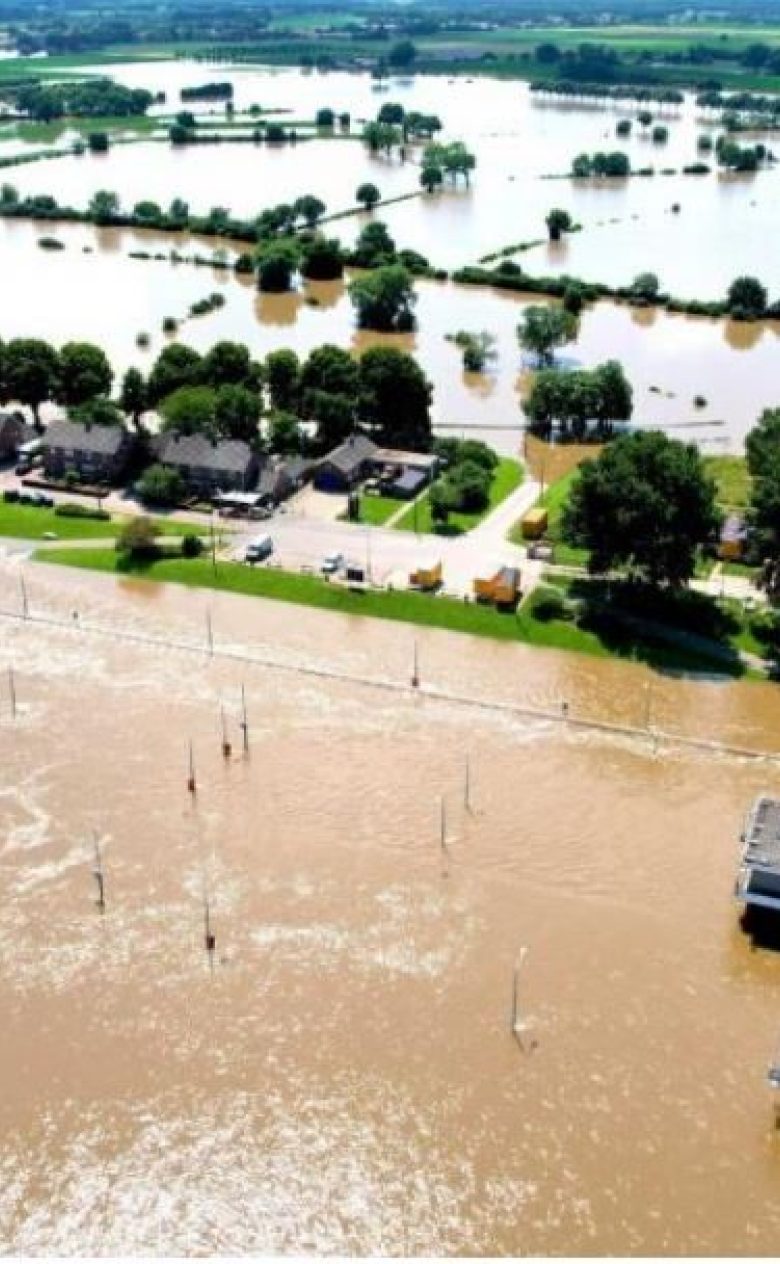Impact of high water in Limburg summer 2021
High water in Limburg in the summer of 2021 had more impact than river floods in 1993 and 1995. The intense rainfall and high water of July 2021 in the Netherlands and the neighbouring countries was an extreme and exceptional event with a major social impact in Limburg. On behalf of the Expertise Network on Flood Risk Management (ENW), a broad consortium of research institutions led by Delft University of Technology and Deltares has now completed an initial analysis of the available information on a range of subjects.

More damage than the floods of 1993 and 1995
The amounts of rainfall and river discharges measured have never been so high, particularly in summer. It has been estimated that an event of this kind occurs only once every 100 to 1000 years. The peak discharge in the Meuse at Eijsden and a number of tributaries was the highest discharge ever measured. The estimated total damage caused by flooding amounted to between 350 and 600 million euros, largely in the Geul valley. That means that more damage was inflicted than by the floods along the Meuse in 1993 and 1995. Professor Bas Jonkman (TU Delft): ‘This flood broke records in terms of precipitation, run-off and damage. We have to learn from this to make our system future-proof.’
Flood defences coped well
The primary flood defences on the Meuse coped well with the exceptionally high load. There were incidents in a few locations, such as piping (rinsing out of sand from below the dike), and dike heights were inadequate locally. There were therefore large-scale temporary measures such as the positioning of sandbags. The study also produced a picture of the course of the evacuation operation, pollution and the health effects.
Unique event
During the same period, severe flooding resulted in damage amounting to billions, and hundreds of deaths in Germany and Belgium. The situation was more catastrophic there than in the Netherlands, partly due to the higher amounts of rainfall and the steeper – faster-flowing – rivers.
Initial exploration
This study was an initial exploration. It is clear that this was an extreme and unparalleled event for the Netherlands. The findings from the study can be used for follow-up studies, the evaluation of the system and – where necessary – the identification of upgrade measures in technical, spatial and organisational respects.
Kymo Slager, the project leader from Deltares, underlines the importance of the analysis: ‘This extreme event and the activities of the consortium have provided us with clear first-hand insights into the information needs of the various organisations that play a role during and after the crisis. That provides direction for the further development of technological instruments.’
Participants
The study was conducted by a broad consortium: Deltares, Delft University of Technology, HKV Lijn in Water, VU-University Amsterdam, Utrecht University, KNMI, Wageningen University and Research Centre, Erasmus MC and the University of Twente on behalf of the Expertise Network Flood Risk Management (ENW) and with the full support of the Limburg water authority and Rijkswaterstaat.

